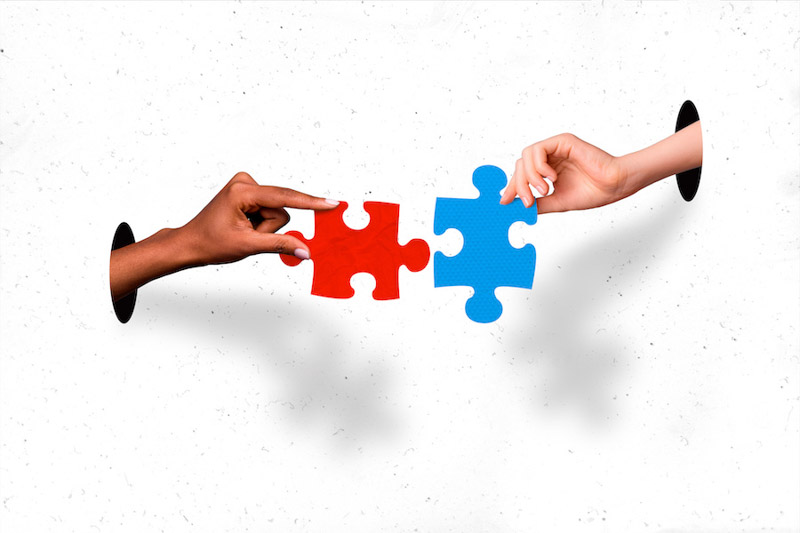Aquatic Puzzles
Overview
Children will assemble simple puzzles to learn more about aquatic animals and their life cycles.
Focus Question
-
How do we know living and nonliving things are in the water around us? What do they look like when they are growing?
Enduring Understandings
- Living and nonliving things in Alaska waters come in a great assortment of colors, shapes, and sizes.
- Living things move, grow, and change.
Engagement
5 minutes
Introduce the tiny creatures of our blue planet by making a dot with a pencil on a piece of paper. Explain to students that this is how big the animals are, that they will be looking at and studying through books, puzzles, and investigations. Remind them that through earlier investigations they found out about plankton and how they feed bigger animals. Explain that they will now look at the characteristics of these living creatures!
Exploration
20 minutes
Show the students a full puzzle. Explain that when the puzzle pieces are assembled and lined up they show how one creature develops, from zooplankton (stage) to adult animals.
Macro-micro freshwater puzzles
Ask the students, “What do you notice about the zooplankton stage of the animal?”
Show a variety of puzzles and support students’ vocabulary.
Distribute the two-part puzzles of marine or freshwater animals for students to assemble.
Students will notice and describe the difference between the 2 stages of development.
On the bottom of each puzzle is a simple sentence. I am a _______. Children may practice recognizing the different animals and checking the sentence to see if they are correct.
Explanation
At same time as Exploration.
Have students explain their thinking by showing the puzzle piece and identifying the characteristics of each creature. They can notice the size, shape, and possible features of the animal that help it move in an aquatic environment. Rather than just putting the puzzles together, the children need to be supported to notice specific characteristics as they work on the puzzles.
Using the question “what is your evidence?” will support students to recognize the need to explain their thinking.
Elaboration
Ongoing
Give students opportunities to continue putting these puzzles together during activity center time. In this way, children will explain their thinking to their peers and connect it to other activities and games they are playing. Students could also make connections of other developing animals they are familiar with, applying it to classroom pets (fish, turtles, doves) and/or family pets or themselves. Having large paper available in the classroom and paper at the easel for drawing and painting, along with posters of life cycles of aquatic animals, will assist children to make these connections.
Evaluation
Listen to student’s thinking and document understanding with a checklist. Misconceptions and/or misunderstandings of developing creatures can be addressed through small group discussion or by bringing it back to a large group discussion about the use and understanding of the puzzles.
Teacher Needs
Teacher Prep
Prepare puzzles
Print the photos and description of the pseudoscorpion. Print the small picture.
Compile resources and materials.
Print, copy and fold mini-books.
Prepare class book pages with the words printed out.
Cut, sort and organize textured materials.
Gather, prepare, and organize art materials for murals.
Materials List
- Tagboard or construction paper for puzzles
- Larval to adult marine puzzles
- Larval to adult freshwater puzzles
- Science notebooks
- Resource books, posters, pictures, ID charts, films
- Objects from aquatic environments (shells, rocks, etc.)
- Picture and description of pseudoscorpion
- One mini-book per student
- “Class Book” pages with words printed on them
- A wide variety materials with texture; cloth, plastic, thread, yarn, etc.
- Glue or glue sticks
- Magazines for cutting
- Art materials: large sheets of paper, tempera paints, construction paper, newspaper, paper fasteners (brads), toothpicks, paper bags, markers, wire, and other materials. Children may have ideas of materials to use.
Student Needs
Prior Knowledge
Information from previous lessons with plankton and microscopic creatures. Experience with animals such as class pets, and with a variety of living and nonliving things in the aquatic environment. Experience with glue or glue sticks.
Vocabulary
aquatic, balance, body, bristles, change, claws, color, develop, environment, feel, grow, jaws, legs, living, look, move, mural, oval, non-living, phytoplankton, pincers, segments, shape, size, texture, zooplankton
Standards
Science GLEs Addressed
- A2, C2, C3
[bws_pdfprint display=’pdf’]

